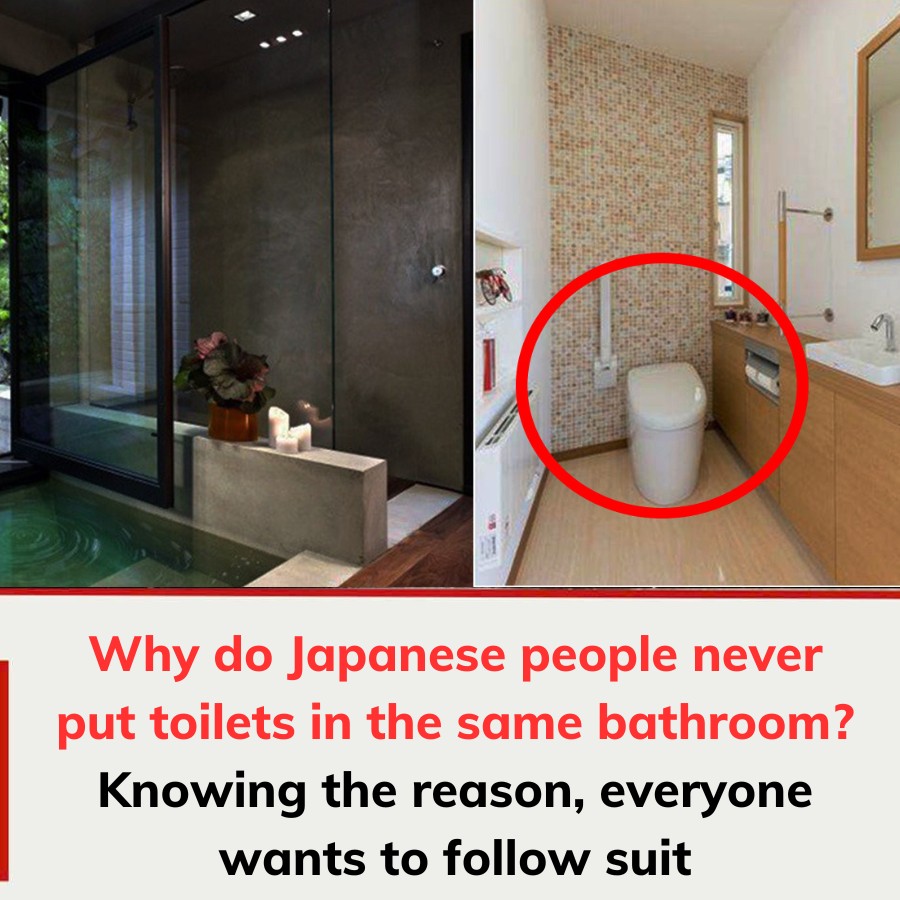In Japan, the separation of toilets from bathrooms is not just an architectural choice but a reflection of cultural values, health awareness, and practical convenience. While many other countries combine the two functions into one room, the Japanese approach offers unique benefits rooted in tradition, hygiene, and modern innovation. Understanding the reasoning behind this separation provides insight into Japan’s emphasis on cleanliness, health, and efficiency.

One of the primary reasons for this separation is the Japanese cultural tradition of prioritizing cleanliness. Historically, toilets were often built far from the main house to prevent unpleasant odors and bacteria from entering living spaces. Even today, Japanese toilets are designed with ventilation and natural light in mind. Many toilets have small windows to ensure airflow, reducing the buildup of moisture and odors. This attention to detail reflects Japan’s long-standing cultural emphasis on maintaining a clean and fresh living environment.
Another critical factor is health. In Japanese culture, the bathroom isn’t merely a place for daily hygiene—it’s a sanctuary. Baths are viewed as therapeutic experiences, spaces to relax, unwind, and restore energy. In contrast, toilets serve a purely functional purpose and are associated with waste and bacteria. By separating these two spaces, the Japanese ensure that their bathing area remains clean, tranquil, and free from contamination.
Scientific studies further support this separation. Research has shown that flushing a toilet can release bacteria and germs into the air, spreading them up to six feet away. This means that anything nearby—like towels, toothbrushes, and even makeup kits—can be contaminated with microscopic particles of waste. One study revealed that toothbrushes stored in combined bathroom-toilet spaces often contain traces of fecal matter. Such findings reinforce the wisdom behind keeping these two areas distinct.
@muffintoppu Reply to @awrith_i_ate_ur_hamster hi i just woke up but im very passionate about japanese toilets #japaneseculture #japantok #nihongo #animefan ♬ original sound – Muffintoppu
Convenience also plays a significant role in the separation of bathrooms and toilets. In many Japanese households, family members spend considerable time in both spaces, often using them for more than their primary functions. The bathroom might be occupied by someone enjoying a long soak in the tub, while another family member urgently needs to use the toilet. By keeping these two rooms separate, families can avoid unnecessary conflicts and ensure smoother routines during busy mornings or evenings.
Modern Japanese toilets are another reason for this architectural choice. Known for their advanced technology, Japanese toilets often feature heated seats, built-in bidets, and even music functions to mask sounds. These features require electricity, making it essential to keep the toilet area dry to prevent accidents or electrical hazards. A separate toilet room ensures that the space remains dry and safe for both the user and the electronic components.
Keeping toilets and bathrooms separate also contributes to better hygiene in other aspects of bathroom use. Studies have revealed shocking data about bacteria in combined bathroom-toilet spaces. For instance, the bathtub, often considered a place of cleanliness, can harbor up to 120,000 bacteria per square inch, especially around the drain. This happens because water carrying bacteria tends to accumulate and stagnate in these areas. The grout between bathtub tiles is another favorite breeding ground for bacteria, which makes regular cleaning essential.
Bathroom floors, while not as dirty as other surfaces, still harbor around 764 bacteria per square inch. Meanwhile, bathroom sinks, where hands are washed and germs are rinsed away, contain an average of 2,733 bacteria per square inch. This makes the sink one of the dirtiest spots in a combined bathroom-toilet space. Without separation, cross-contamination between these areas becomes almost inevitable.
Toilet paper and sanitary pads are also vulnerable to contamination in shared spaces. Toilets are humid environments, and bacteria can easily spread to items stored nearby. In the case of sanitary pads, this can lead to gynecological infections, posing health risks for women. By keeping toilets and bathrooms separate, these risks are significantly reduced.
Additionally, bathroom surfaces that might seem clean at first glance are often far from it. The area around the toilet can host up to 452 bacteria per square inch. Anything placed on or near these surfaces—like makeup kits or hand towels—can become contaminated. This is why it’s strongly advised to avoid applying makeup in a combined bathroom-toilet space.
For Japanese households, this architectural separation is not just about tradition or cultural norms; it’s also about practicality, health, and maintaining a peaceful home environment. When toilets and bathrooms are combined, the risk of cross-contamination increases, the spaces can become overcrowded during peak usage times, and the relaxing atmosphere of a bath can be compromised.
In contrast, having separate spaces ensures that the bathroom remains a serene retreat, free from unpleasant odors and harmful bacteria. The toilet, on the other hand, can be optimized for sanitation, functionality, and even comfort, thanks to Japan’s advanced toilet technology.
In conclusion, Japan’s approach to separating toilets from bathrooms is a well-thought-out practice rooted in cleanliness, health, convenience, and safety. It minimizes health risks, prevents cross-contamination, and ensures that both spaces serve their intended purposes without interfering with each other. This design philosophy reflects not just cultural traditions but also a forward-thinking attitude toward health and hygiene. For households worldwide, adopting this Japanese practice could lead to cleaner, healthier, and more functional living spaces.





